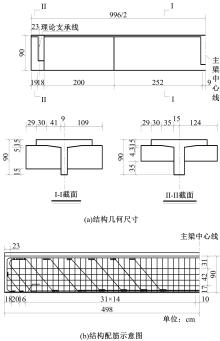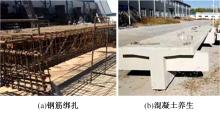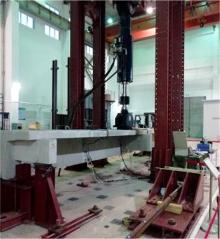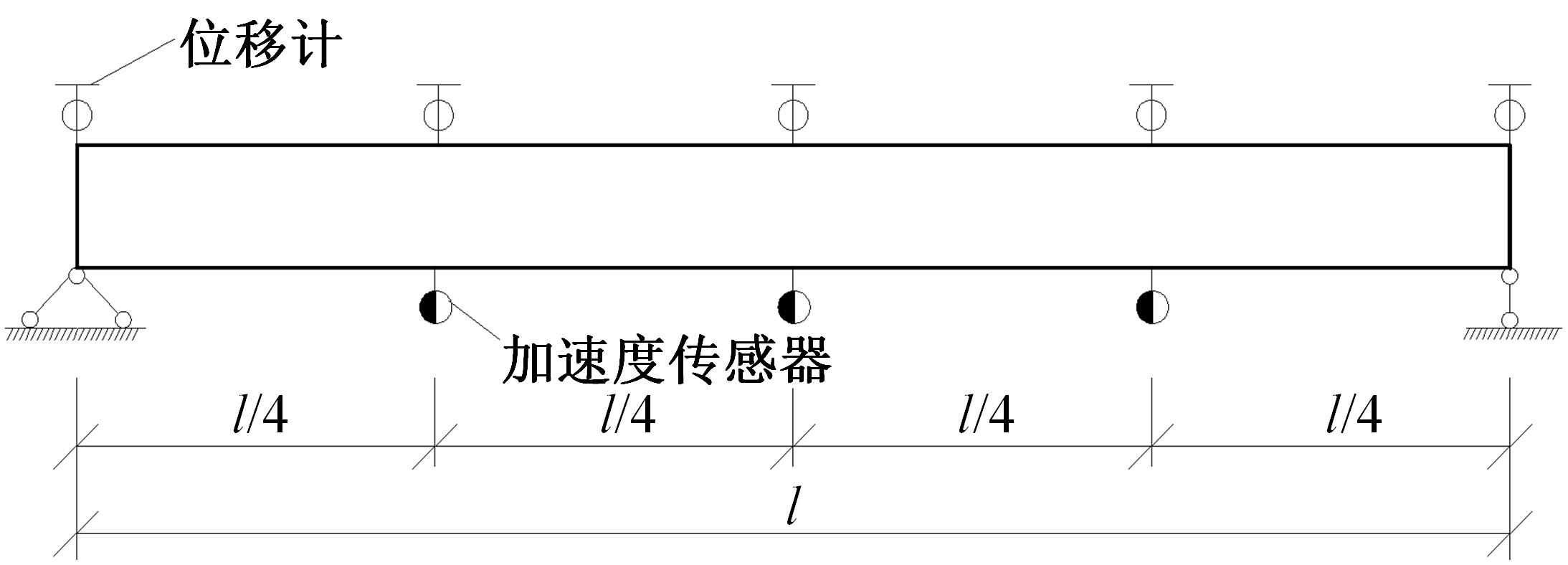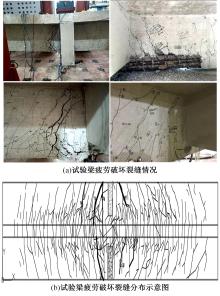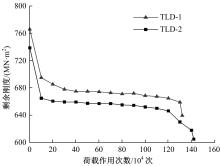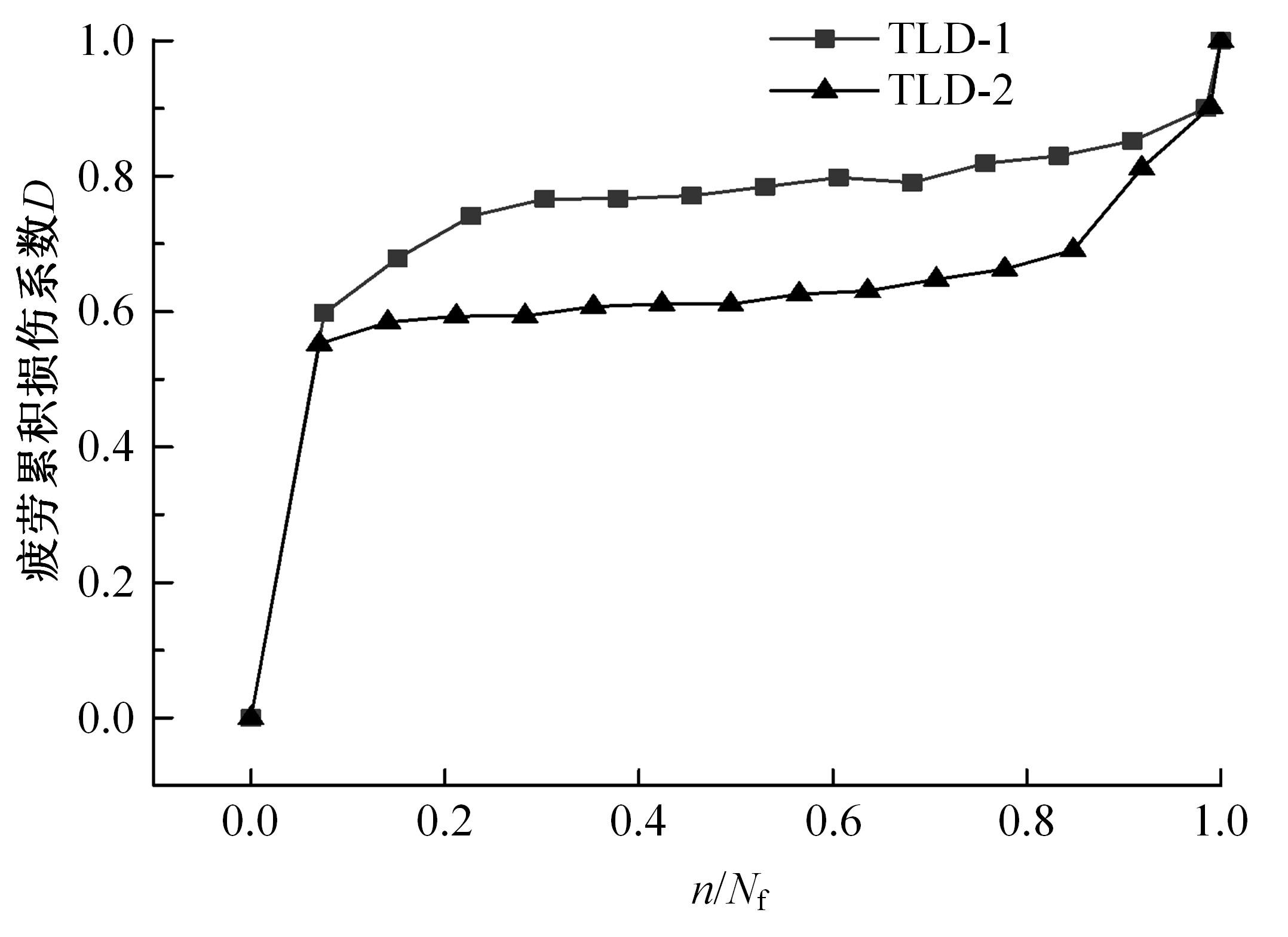Journal of Jilin University(Engineering and Technology Edition) ›› 2023, Vol. 53 ›› Issue (9): 2563-2572.doi: 10.13229/j.cnki.jdxbgxb.20211238
Previous Articles Next Articles
Fatigue stiffness degradation and life prediction method of in⁃service concrete T⁃beams
Xin-dai ZUO( ),Jin-quan ZHANG,Shang-chuan ZHAO
),Jin-quan ZHANG,Shang-chuan ZHAO
- Bridge Tunnel Research Center,Research Institute of Highway Ministry of Transport,Beijing 100088,China
CLC Number:
- U448.38
| 1 | 交通运输部. 2019年年交通运输行业发展统计公报[R]. 北京:交通运输部, 2020. |
| 2 | 宋秀华, 肖新辉, 鲁乃唯. 基于疲劳损伤的中小跨径桥梁限载取值研究[J]. 交通科学与工程, 2019, 35(2): 58-63. |
| Song Xiu-hua, Xiao Xin-hui, Lu Nai-wei. Study on vehicle load limit of medium and small span bridges based on fatigue damage[J]. Journal of Transport Science and Engineering, 2019,35(2): 58-63. | |
| 3 | 卫军, 杜永潇, 梁曼舒. 梁结构疲劳刚度退化对模态频率的影响[J] .浙江大学学报:工学版, 2019, 53(5): 899-909. |
| Wei Jun, Du Yong-xiao, Liang Man-shu. Influence of fatigue stiffness degradation for beam structure on modal frequency[J]. Journal of Zhejiang University (Engineering Science), 2019, 53(5): 899-909. | |
| 4 | 刘芳平, 易文韬. 钢筋混凝土梁基于疲劳刚度退化的承载力退化模型研究[J]. 建筑结构, 2020, 50(22): 99-104, 66. |
| Liu Fang-ping, Yi Wen-tao. Research on bearing capacity degr8dation model of reinforced concrete beams based on fatigue stiffness degradation[J]. Building Structure, 2020,50(22): 99-104, 66. | |
| 5 | 汪炳, 黄侨, 刘小玲. 组合梁疲劳后的刚度退化规律及计算模型[J]. 振动与冲击, 2021, 40(6): 265-271. |
| Wang Bing, Huang Qiao, Liu Xiao-ling. Stiffness degradation and its calculation model for composite beams after fatigue[J]. Journal of Vibration and Shock, 2021, 40(6): 265-271. | |
| 6 | 周虎, 肖勇刚, 谭斌. 基于断裂力学的混凝土桥梁疲劳损伤及寿命评估分析[J]. 湖南城市学院学报: 自然科学版, 2018, 27(4): 6-10. |
| Zhou Hu, Xiao Yong-gang, Tan Bin. Fatigue damage and life evaluation of concrete bridges based on fracture mechanics[J]. Journal of Hunan City University (Natural Science), 2018, 27(4): 6-10. | |
| 7 | 陈万. 重载交通作用下桥梁结构的疲劳损伤数值分析[D].邯郸: 河北工业大学土木工程学院, 2015. |
| Chen Wan. Numerical analysis on fatigue damage of bridge caused by heavy load traffic[D]. Handan: School of Civil Engineering, Hebei University of Technology, 2015. | |
| 8 | 赵少杰, 任伟新. 超限超载交通对桥梁疲劳损伤及可靠度的影响[J]. 中南大学学报: 自然科学版, 2017, 48(11): 3044-3050. |
| Zhao Shao-jie, Ren Wei-xin. Effect of overrun and overloaded vehicles on fatigue damage and reliability of highway bridges[J]. Journal of Central South University (Science and Technology), 2017, 48(11): 3044-3050. | |
| 9 | Natário F, Fernández R M, Muttoni A. Experimental investigation on fatigue of concrete cantilever bridge deck slabs subjected to concentrated loads[J]. Engineering Structures, 2015, 89: 191-203. |
| 10 | Liu Fang-ping, Zhou Jian-ting, Yan Lei. Study of stiffness and bearing capacity degradation of reinforced concrete beams under constant-amplitude fatigue[J]. PLoS ONE, 2018, 13(3): No.e0192797. |
| 11 | 朱红兵. 公路钢筋混凝土简支梁桥疲劳试验与剩余寿命预测方法研究[D]. 长沙: 中南大学土木工程学院, 2011. |
| Zhu Hong-Bing. Method and experiment research on highway reinforced concrete simply-supported girder bridge's fatigue residual service life forecast[D]. Changsha: School of Civil Engineering, Central South University, 2011. | |
| 12 | 刘芳平, 周建庭. 基于疲劳应变演化的混凝土弯曲强度退化分析[J]. 中国公路学报, 2017, 30(4): 97-105. |
| Liu Fang-ping, Zhou Jian-ting. Concrete bending strength degradation analysis based on fatigues strain evolution[J]. China Journal of Highway and Transport, 2017, 30(4): 97-105. | |
| 13 | Cheng L J. Flexural fatigue analysis of a CFRP form reinforced concrete bridge deck[J]. Composite Structures, 2011, 93(11):2895-2902. |
| 14 | Neild S A, Williams M S, Mcfadden P D. Nonlinear vibration characteristics of damaged concrete beams[J]. Journal of Structural Engineering ASCE, 2003, 129(2): 260-268. |
| 15 | 曹晖, 郑星, 华建民, 等. 基于非线性振动特性的预应力混凝土 梁损伤识别[J]. 工程力学, 2014, 31(2): 190-194. |
| Cao Hui, Zheng Xing, Hua Jian-min, et al. Damage detection of prestressed concrete beams based on non-linger dynamic characteristics[J]. Engineering Mechanics, 2014, 31(2): 190-194. | |
| 16 | 卫军, 杜永潇. 基于固有频率的梁结构疲劳损伤演化规律[J]. 中南大学学报: 自然科学版, 2019, 50(8): 1866-1875. |
| Wei Jun, Du Yong-xiao. Fatigue damage evolution of Timoshenko beams based on natural frequency[J]. Journal of Central South University (Science and Technology), 2019, 50(8): 1866-1875. | |
| 17 | 朱红兵, 赵耀, 李秀, 等. 疲劳荷载作用下钢筋混凝土梁的刚度退化规律及计算公式[J].土木建筑与环境工程, 2014, 36(2): 1-13. |
| Zhu Hong-bing, Zhao Yao, Li Xiu, et al. Reinforced concrete beam's stiffness degeneration regulation and its calculation formula under the action of fatigue load[J]. Journal of Civil, Architectural & Environment Engineering, 2014, 36(2): 1-13. | |
| 18 | 姚恒盈. 装配式预应力混凝土箱梁静动刚度足尺试验全过程分析[D]. 西安:长安大学公路学院, 2020. |
| Yao Heng-ying. Dynamic and static stiffness analysis of full-scale prefabricated prestressed concrete girder[D]. Xi′an: School of Highway, Chang'an University, 2020. | |
| 19 | 廉伟, 姚卫星.复合材料层压板剩余刚度-剩余强度关联模型[J]. 复合材料学报, 2008, 25(5): 151-156. |
| Lian Wei, Yao Wei-xing. Residual stiffness-residual strength coupled model of composite laminates[J]. Acta Materiae Composites Sinica, 2008, 25(5): 151-156. | |
| 20 | Ma Y, Xiang Y, Wang L, et al. Fatigue life prediction for aging RC beams considering corrosive environments[J]. Engineering Structures, 2014(79): 211-221. |
| [1] | Ran AN,You-zhi WANG. Shear properties of shear stud connectors under combined tension and shear loading [J]. Journal of Jilin University(Engineering and Technology Edition), 2023, 53(9): 2554-2562. |
| [2] | Feng WANG,Shuang-rui LIU,Jia-ying WANG,Jia-ling SONG,Jun WANG,Jiu-peng ZHANG,Xiao-ming HUANG. Size and shape effects of wind drag coefficients for porous structures [J]. Journal of Jilin University(Engineering and Technology Edition), 2023, 53(6): 1677-1685. |
| [3] | Jun WANG,Jia-wu LI,Feng WANG,Jiu-peng ZHANG,Xiao-ming HUANG. Wind speed distribution in simplified U⁃shaped valley and its effect on buffeting response of long⁃span suspension bridge [J]. Journal of Jilin University(Engineering and Technology Edition), 2023, 53(6): 1658-1668. |
| [4] | Hua WANG,Long-lin WANG,Zi-mo ZHANG,Xin HE. Safety early warning technology of continuous rigid frame bridges based on crack width variation [J]. Journal of Jilin University(Engineering and Technology Edition), 2023, 53(6): 1650-1657. |
| [5] | Yu FENG,Jian-ming HAO,Feng WANF,Jiu-peng ZHANG,Xiao-ming HUANG. Analysis of transient wind⁃induced response of long⁃span bridge under nonstationary wind field [J]. Journal of Jilin University(Engineering and Technology Edition), 2023, 53(6): 1638-1649. |
| [6] | Zheng-wei GU,Pan ZHANG,Dong-ye LYU,Chun-li WU,Zhong YANG,Guo-jin TAN,Xiao-ming HUANG. Earthquake⁃induced residual displacement analysis of simply supported beam bridge based on numerical simulation [J]. Journal of Jilin University(Engineering and Technology Edition), 2023, 53(6): 1711-1718. |
| [7] | Chun-li WU,Shi-ming HUANG,Kui LI,Zheng-wei GU,Xiao-ming HUANG,Bing-tao ZHANG,Run-chao YANG. Analysis of pier action effect under flood based on numerical simulation and statistical analysis [J]. Journal of Jilin University(Engineering and Technology Edition), 2023, 53(6): 1612-1620. |
| [8] | Guo-jin TAN,Qing-wen KONG,Xin HE,Pan ZHANG,Run-chao YANG,Yang-jun CHAO,Zhong YANG. Bridge scour depth identification based on dynamic characteristics and improved particle swarm optimization algorithm [J]. Journal of Jilin University(Engineering and Technology Edition), 2023, 53(6): 1592-1600. |
| [9] | Hui JIANG,Xin LI,Xiao-yu BAI. Review on development of bridge seismic structural systems: from ductility to resilience [J]. Journal of Jilin University(Engineering and Technology Edition), 2023, 53(6): 1550-1565. |
| [10] | Ye YUAN. Natural frequency analysis of beam bridge structure under temperature and vehicle action [J]. Journal of Jilin University(Engineering and Technology Edition), 2023, 53(6): 1702-1710. |
| [11] | Zi-yu LIU,Shi-tong CHEN,Mo-mo ZHI,Xiao-ming HUANG,Zhe-xin CHEN. Ultimate bearing capacity of temporary⁃permanent conversion rush⁃repair steel pier for emergency use [J]. Journal of Jilin University(Engineering and Technology Edition), 2023, 53(6): 1601-1611. |
| [12] | Yue ZHANG,Chuan-sen LIU,Fei SONG. Influence of abutment back wall on continuous girder bridge's seismic fragility [J]. Journal of Jilin University(Engineering and Technology Edition), 2023, 53(5): 1372-1380. |
| [13] | Shu-wei LAN,Dong-hua ZHOU,Xu CHEN,Nan-ming MO. Practical calculation method for the critical bearing capacity of double column bridge with high piers [J]. Journal of Jilin University(Engineering and Technology Edition), 2023, 53(4): 1105-1111. |
| [14] | Qi-kai SUN,Nan ZHANG,Xiao LIU,Zi-ji ZHOU. Dynamic reduction coefficients of steel⁃concrete composite beam based on Timoshenko beam theory [J]. Journal of Jilin University(Engineering and Technology Edition), 2023, 53(2): 488-495. |
| [15] | Yong PENG,Xiu-fang ZHANG,Ze-yu GUO,Xue-yuan LU,Yan-wei LI. Influence of aggregate contact characteristics on shear fatigue life of asphalt mixtures using discrete element method [J]. Journal of Jilin University(Engineering and Technology Edition), 2023, 53(1): 178-187. |
|




